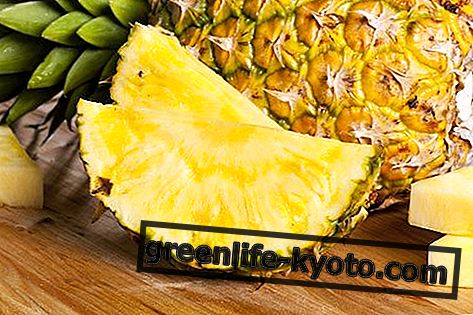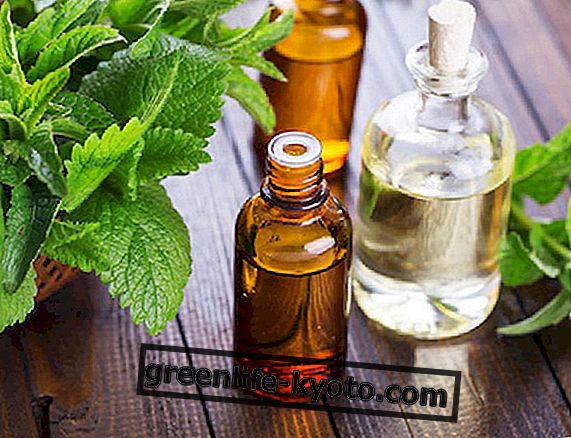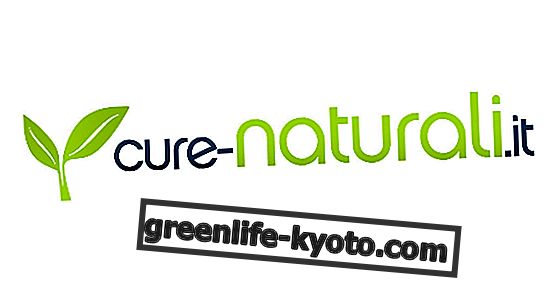Cabbage-cabbage contains carbohydrates, lipids, proteins and is very rich in vitamin A, vitamin C and K. Let's find out better.
>
>
>

Description and variety of cabbage-cabbage
The term "cabbage" refers to some species of the Cruciferae family ; due to their different morphological characteristics, they are divided into:
- Brassica oleracea botrytis, broccoli cabbage and cauliflower ;
- Brassica oleracea capitata, cabbage and cabbage-cabbage ;
- Brassica oleracea gemmifera, Brussels cabbage ;
- Brassica oleracea gongyloides, cabbage-turnip ;
- Brassica napus, cabbage-navone;
- Brassica pekinensis, Chinese cabbage .
In cabbages "from leaf", hood and cabbage, the edible part consists of a rosette of leaves that forms a hard and compact ball. The most widespread cultivation is the autumn-winter one of Southern Italy but also Trentino, Veneto and Emilia Romagna offer a good production in the spring-autumn period.
The varieties are very numerous, among the late we remember the Violaceo di Verona, the cabbage-cabbage of Piacenza, the Monrch, between the early ones the Princess and the hybrid Wirosa.
Properties and benefits of cabbage-cabbage
The healing properties of cabbage-cabbage have been known since antiquity; the Greeks even considered it sacred.
Savoy cabbage contains (like all brassicas : horseradish, mustard, rapeseed, etc.) sulfated molecules that in glucosinolates are mostly linked to glucose. An enzyme contained in the plant is able to break down glucosinolates into glucose and agluconi, like "mustard oil". The decomposition mechanism is triggered when the plant is injured and the sap is released. The cabbage-cabbage defends itself in this way so that the ruminants do not eat it too much since the latter are sensitive to the acrid taste and irritation caused by mustard oil.
Savoy cabbage has excellent analgesic, anti-inflammatory, decongestant and topical antiseptic properties . Used when the cabbage is fresh, they are quite diluted (approx. 0.1%) and therefore do not act too irritatively or toxic.
Cabbage-cabbage juice is also very useful to combat constipation : for this purpose the cabbage is boiled in a little water for no more than 2/3 minutes (to avoid the loss of numerous properties) and the juice is filtered, from drink in the morning and evening.
In folk medicine the mechanism of decomposition of glucosinolates in glucose and "mustard oil" is exploited, mainly as fresh cabbage leaf wraps . Some very strong and green leaves are well washed; after removing the large ribs with a knife, cut them into strips and crush them well with a bottle until the juice comes out.
They are applied in 2-3 layers around a painful joint or applied to a rheumatic area, covering them with gauze to keep them firm. After a few hours, change the application by replacing it with other fresh leaves. In this way a slight irritation is provoked which stimulates the immune system to intervene: the agluconi molecules pass the skin easily by binding the algesic molecules to inflammatory residues.
The decoction of cabbage leaves appears to help fight bronchitis and asthma as well as diseases of the gastro-digestive system. The cooking water is rich in sulfur and is used for the treatment of eczema and inflammation .
Precisely because of the large amount of mineral salts that this vegetable brings to the body, it is good to use it in all cases of debilitation and also to strengthen the body's immune defenses . Furthermore, its abundant consumption carries out a disinfectant and antibiotic action both for the intestine and for the respiratory system.
Calories and nutritional values of cabbage-cabbage
Cabbage-cabbage, like all cabbage, contains carbohydrates, lipids, proteins and is very rich in vitamin A (1, 000-1, 600 IU), vitamin C (55 mg / 100g of fresh substance), vitamin K (important for the coagulation of blood) and mineral elements such as potassium, phosphorus, iron, calcium, sulfur (the latter also responsible for the characteristic odor perceptible during cooking).
100 g of savoy cabbage contain 27 kcal .
Furthermore, in 100 g of product we find:
- Lipids 0, 1 g
- Cholesterol 0 mg
- Sodium 28 mg
- Potassium 230 mg
- Glucidi 6 g
- Dietary fiber 3.1 g
- Sugar 2.3 g
- Proteins 2 g
- Vitamin A 1, 000 IU
- Vitamin C 31 mg
- Calcium 35 mg
- Iron 0.4 mg
- Magnesium 28 mg
Curiosity about cabbage-cabbage
Fermented foods have been consumed and appreciated for thousands of years at all latitudes. Lacto-fermentation, in fact, is a process by which other foods are obtained completely from the starting foods, with completely new aromatic and digestibility characteristics: for example, anti-nutritive substances are destroyed, vitamins and enzymes are increased.
From the lacto-fermentation of cabbage, sauerkraut is obtained which is the best known food obtained from lactic fermentation. They contain large amounts of choline, a substance that has the ability to lower blood pressure, regulate the absorption of fat in the body and facilitate the passage of nutrients into the blood.
With age the various secretions of the body (hydrochloric acid, digestive juices, pancreatic juices) decrease: the acidity level of the stomach can reach 6-7, with the consequence that pathogenic bacteria normally destroyed by the acidity of the stomach can pass into the intestine. If taken regularly, the lacto-fermented products become indispensable when the digestive capacity is weakened .
How to eat cabbage-cabbage
The best way to consume cabbage (to better enhance the flavor and nutritional and therapeutic characteristics) is to eat it raw, after having thinly cut it and seasoned with extra virgin olive oil and a pinch of salt; a sprinkling of cumin seeds improves digestibility and aroma.
Since it is a useful food in the prevention of joint degeneration, both for the treatment of arthritis and arthrosis, it can be extremely useful to obtain a centrifuge of fresh cabbage juice . A couple of glasses of this juice (integrated with that of carrot) can be useful to relieve the pain of aching joints.













